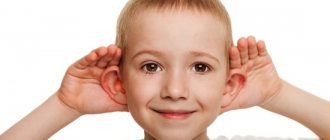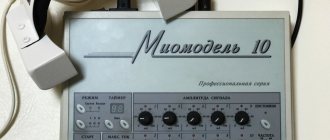Phonemic awareness is like a door that opens the speech flow in a child's development. This type of perception ensures the formation of the ability to understand speech by ear. He is also responsible for the gradual transformation of baby babble into meaningful words and sentences. The development of phonemic awareness in preschoolers depends on the characteristics of other cognitive processes. Thus, children with tenacious attention begin to recognize speech sounds faster. This process is accompanied by greater accuracy, which contributes to the development of phonemic hearing.
What is phonemic awareness?
When a baby learns to speak and understand speech addressed to him, development occurs in two areas - the pronunciation side of speech and the recognition and analysis of speech. In preschool centers, great attention is paid to both areas. Analysis of sound content, in turn, involves hearing and perception.
- Phonemic hearing
is the innate ability to hear and distinguish units of speech. - Phonemic perception
is the ability to distinguish meaningful units of language (phonemes) and understand the sound composition of the native language.
This is a necessary condition for the formation of beautiful coherent speech, clear pronunciation, learning to read and write, which are necessary not only in everyday life, but also in acting schools and vocal classes.
What is phonetic hearing
Anyone who has visited a speech therapist at least once or performed speech therapy tasks with a child is familiar with this concept; specialists use it constantly. Most likely, you have already heard about its importance for speech development. What does it mean and why does it affect the way your baby speaks? Experts believe that phonemic hearing is a person’s ability to distinguish individual phonemes, i.e. sounds. This skill represents the skills:
- recognition;
- comparisons;
- repetition of the elements that make up words.
It is a unique and necessary feature that complements the normal ability to hear.
In young children, a speech therapist checks, first of all, normal hearing - the reaction to everyday noises (ringing, humming, whistling). If it is in order, then the ability to distinguish more subtle components of the surrounding world of sounds is gradually formed.
Next comes the ability not only to isolate the phonemes of a language, but also to reproduce them. This phenomenon can be compared to manually tuning a radio or walkie-talkie. In a sea of noise, speech hearing helps you catch words and gradually understand them by hearing them clearly. A similar process occurs in every child; he gradually “tunes in” to the speech of adults, catching it better and more accurately. (Of course, this process is much worse for hearing-impaired children.)
If this does not happen, then the child’s phonemic hearing and phonemic perception are impaired. They are the ones who influence how accurately your son or daughter is able to repeat a particular word. Sounds individually may sound perfect, but together they “don’t sound like friends.” For example, instead of “kolobok” you will hear “kobolek”, instead of “shop” - “zigizin”, instead of “tram” - “tranvay”, etc.
For a child, this state of affairs is the age norm, but if such features persist after two years, then you should seek help from a speech therapist and start classes as soon as possible.
A child with such problems not only finds it difficult to express his thoughts, but it is difficult for others to understand him. He lags significantly behind his peers; speech underdevelopment makes it difficult for him to communicate with them. At an older age, if measures are not taken to correct speech hearing impairments, the student will make many mistakes when writing and study worse.
The task of parents is to notice the presence of such characteristics in their child as early as possible and take the necessary measures.
Timely assistance from a specialist will help correct the situation. There are a huge number of games, tasks, exercises aimed at developing phonemic awareness in children, as well as training phonemic perception. These two concepts are often found in conjunction, so it’s worth taking a closer look at the second component of this pair.
Why is it important to develop this in preschool?
Hearing develops naturally even before birth, and after birth it undergoes serious improvement, which is completed around 7–8 years. Psychologist Lev Vygotsky identified three speech operations that require phonemic hearing:
- the ability to determine whether a given sound is in a particular word;
- the ability to recognize and understand words consisting of the same letters arranged in different orders;
- the ability to understand words that sound similar but have different meanings.
Phonemic perception, on the contrary, is not formed spontaneously, but requires some effort on the part of the child, parents and teachers.
Violation of these functions can lead to a child falling behind the educational program in kindergarten, and then at school, and to difficulty mastering the Russian language and writing.
Most often, sound perception disorders are diagnosed during preparation for school. In this case, teachers immediately send the child to classes with a speech therapist for children 5 or more years old.
Exercises to improve auditory perception in children
Recognition of non-speech sounds.
This is a play practice that can be done at home, on a walk, in a children's club or in any other setting. Ask your child to listen and answer: what is the noise outside the window? How many phonemes can he distinguish? What produces them? Similarly, you can play at home using musical instruments or recording their sounds.
Pitch
. In this activity, children are taught to distinguish the tone of sounds made. There are many exercise options. For example, play a recording of a children's fairy tale about “The Three Bears” and ask the child to answer which voice belongs to daddy bear, which voice belongs to mother, which voice belongs to the baby.
Similar Word Recognition
. It is important to teach a preschooler not to confuse similar words and to pronounce them correctly, without replacing letters with similar ones. This is an exercise that is used in early development centers and courses for children: show your child a picture and say the name of what is drawn on it, replacing only the first letter. The child’s task, upon hearing the correct pronunciation of the word, is to clap his hands and stop the adult.
Sounds and colors.
Give your preschooler 3-5 cards of different colors. Explain in advance that each color has a corresponding sound. For example, green - A, yellow - U, etc. The child should pick up the card of the corresponding color when they hear a specific sound.
The formation of speech and hearing skills is a responsible and important process, so it is worth entrusting it to professionals. The Center for Additional Education for Children "Imena Production" employs highly qualified speech therapists who will not only correct speech defects in preschoolers and schoolchildren, but also help improve speech and hearing for classes in a children's vocal studio.
Features of correctional work on the formation of phonemic perception
The study of the problem of the development of phonemic perception in preschool children with phonetic-phonemic speech underdevelopment is discussed in the works of R. E. Levina, G. A. Kashe, L. F. Spirova, T. B. Filicheva, M. F. Fomicheva, G. V. Chirkina, S. N. Shakhovskaya and others.
Considering the need and importance of a child mastering phonemic hearing, phonemic perception, analysis and synthesis in preschool age, we came to the conclusion that it is important to study the problem of complex speech therapy work in order to form phonemic perception of speech in children of senior preschool age with phonetic-phonemic speech underdevelopment.
The relevance of correctional work is ensured by the increasing number of children with disorders of the phonetic side of speech and the search for new ways to overcome its shortcomings.
Phonetic-phonemic underdevelopment (FFN) is understood as a violation of the process of formation of the pronunciation system of the native language in children with various speech disorders due to defects in the perception and pronunciation of phonemes.
The main feature of phonetic-phonemic underdevelopment (impaired development of phonemic processes) is the low ability to analyze and synthesize sounds, which affects the perception of the phonemic composition of the language.
That is why, in this article, a system of correctional work will be proposed aimed at developing the phonemic perception of children of senior preschool age with FFN.
Stages of formation of phonemic perception
In the work of Filicheva T.B., Cheveleva N.A. The formation of phonemic awareness occurs in six stages.
These stages were taken as the basis for selecting tasks for the formation of phonemic hearing, analysis and synthesis. Each stage contains a sequence of tasks, taking into account the principle “from simple to complex.”
- Recognition of non-speech sounds.
- Distinguishing identical sound complexes by height, strength, timbre.
- Distinguishing between words that are similar in sound composition.
- Differentiation of syllables.
- Phoneme differentiation.
- Development of basic sound analysis skills.
Techniques for developing phonemic awareness
Let us consider in more detail how the development of phonemic perception in children occurs at each of the indicated stages of speech therapy intervention.
Stage 1 - “Recognition of non-speech sounds.”
- Sounds of the surrounding world.
- Sounding toys.
- Playing the rhythm.
- Isolated blows.
- A series of simple strikes.
- A series of accented blows.
4-5 objects are placed in front of the child (a metal box, a glass jar, a plastic cup, a wooden box), when tapped on, you can hear different sounds. Using a pencil, the speech therapist calls out the sound of each object and plays it repeatedly until the student grasps the nature of the sound.
It is advisable to use exercises that are aimed at reproducing a rhythmic pattern (rhythm) when clapping, tapping or making a sound on any instrument (tambourine, rattle, piano, accordion, etc.). A rhythmic pattern can be depicted graphically. If the sound is long, we denote it with the sign O, if the sound is short, we mark it with +.
The result is a table:
| + | + | 0 | + |
| + | 0 | 0 | + |
| 0 | + | 0 | + |
Exercise "Snowman".
Children “draw” with their hands three “snowman” circles of different sizes and sing 3 sounds of different pitches.
Stage 2 “Distinguishing identical sound complexes by height, strength and timbre”
Exercise “The Scientist Bear and the Little Sparrow.”
Big bear - low, heavy sounds, children sing - E-EE-E, little sparrow - high-pitched sounds - chik-chirp.
Exercise “The Cuckoo and the Clock.”
Children depict how a clock ticks - tick-tock - showing the movement of a pendulum with their hands, and how a cuckoo crows - peek-a-boo, waving its arms.
Stage 3 - “Distinguishing words that are similar in sound composition.”
You can invite the children to take two mugs: yellow and blue and invite them to play. If the child hears the correct name of the object shown in the picture, he should raise a yellow circle, if the wrong name - blue:
- baman-panam-banan-wawan-dawan-bawan-wanan;
- cell-kvetka-kvekta-cell-kletta.
To complicate the work, you can offer this type of work: name the objects shown in the pictures and connect those whose names sound similar.
- Listen to the rhyme, find the “wrong word” in it and replace it with a word that is similar in sound and suitable in meaning:
- Mom scolded the bunny for not wearing a NUT (MAIKA) under his sweater. There is a lot of snow in the yard - TANKS are driving along the mountain, etc.
- The speech therapist reads the rhyme, highlighting the last word in the first line with his voice. Preschoolers, trying to achieve rhyme in a verse, must finish the second line with one of three suggested words:
- Even the table got dirty late in the evening... (ran away, left, galloped away).
Stage 4 - “Reproduction and differentiation of syllables.”
It is suggested to use the following types of exercises:
- Play a number of syllables with a change in the stressed syllable: YES-YES-YES;
- Reproduce combinations of syllables with a common consonant sound: MU-MY-MA; BUT-NA-WELL;
- Reproduce combinations of syllables that have a common vowel: TA-KA-PA;
- Reproduce combinations of syllables that have differences in deafness - voicedness: a) two syllables: pa-ba, b) three syllables: PA-BA-PA;
- Reproduce combinations of syllables that differ in hardness and softness: MA-MYA;
- Reproduce combinations of syllable pairs, gradually increasing the consonant sound: PA-TPA;
- Reproduce combinations of syllables with a common combination of two consonants and different vowels: PTA-PTO-PTU-PTY;
- Reproduce combinations of syllable pairs with a change in the position of consonant sounds in their combination: PTA-TPA.
Stage 5 - “Differentiation of phonemes, clarification of sound articulation based on perception and sensations.”
At the stage of phoneme differentiation, children learn to distinguish phonemes of their native language. You need to start with differentiating vowels.
1. “Find a match.”
Goal: to consolidate knowledge about vowels of the first and second row.
The adult names the vowel of the first row, and the child names the vowel of the second row and vice versa. (A-Z, O-Y, U-Y, E-E, Y-I)
2. “Insert letter.”
Goal: to consolidate knowledge about vowels of the first and second row.
The child needs to insert the missing vowel (a separate exercise is given for each pair).
Insert A-Z: m....h, m...k, s....d, t....kidneys, gr...h, ...block.
Then with consonants.
Goal: to consolidate the ability to distinguish between hard and soft consonants.
An adult shows pictures of objects (from any board game like lotto). The child must arrange these pictures into two piles: words that begin with a hard consonant and words that begin with a soft consonant.
At this stage you can play the following games:
"Correct mistakes".
Goal: to develop auditory attention.
Assignment: the presenter reads a poem, deliberately making mistakes in words. Name the words correctly.
Having dropped the ball from his hands, Kolya rushes to his mother: - There are green onions crawling there with long mustaches. (bug)
"Rhythms"
Goal: development of auditory attention.
Task: the leader taps out different rhythms
(— —, — — —, — — —, etc.), and the children repeat after him.
“Identify by ear the shortest (longest) word”
Kangaroo, cat, cow, turtle;
Tram, bus, bicycle, train, etc.
Stage 6 - Development of basic sound analysis skills.
"Name the Sound"
Goal: development of auditory attention.
Task: an adult pronounces 3-4 words, the child must name the sound that is repeated in all words.
Fur coat, car, baby, drying
commander, pipe, mole, lynx, etc.
The proposed system of tasks for the development of phonemic hearing can be the basis for planning speech therapy correction work in different age groups of preschool educational institutions.
The system of tasks for the development of phonemic hearing, analysis and synthesis can be used by preschool teachers. To do this, it is necessary to determine the level of development of phonemic hearing and begin work at the appropriate stage, taking into account the age characteristics of the children.
A special feature of this system is that the formation of phonemic perception is carried out in a playful way in subgroup, individual, frontal classes and in the correctional work of the teacher. The teacher, using games recommended by the speech therapist, consolidates the results achieved in subgroup speech therapy classes. Therefore, the system of tasks is created in such a way that it is easy for a teacher of any group of a preschool institution to navigate the tasks.
Thus, the developed system of tasks is universal and can be used not only by teachers, but also by parents. It allows you to organize continuous interaction between all categories of teachers, including music workers and physical education instructors, since all of these categories of people can use these tasks, use games, and, therefore, systematically develop the phonemic perception of children with physical disabilities.
Reshetnyak Olga Valerievna, teacher-speech therapist, MBDOU combined type kindergarten No. 27 “Lesovichok”, Tolyatti city district
- GCD for the formation of phonemic awareness
- The use of didactic games as a means of developing phonemic hearing and perception of preschoolers
- Summary of a lesson on the development of phonemic awareness
- Long-term plan for correctional work on the development of spatial perception, prevention of optical dysgraphia [school preparatory group]
- Perspective-thematic plan for correctional work on the development of spatial perception in children with speech disorders [senior group]
( 5 liked, average score: 4.80 out of 5)
Loading...






